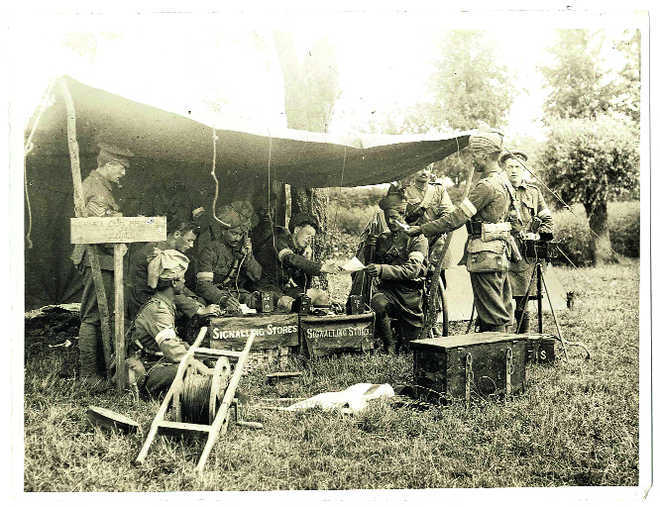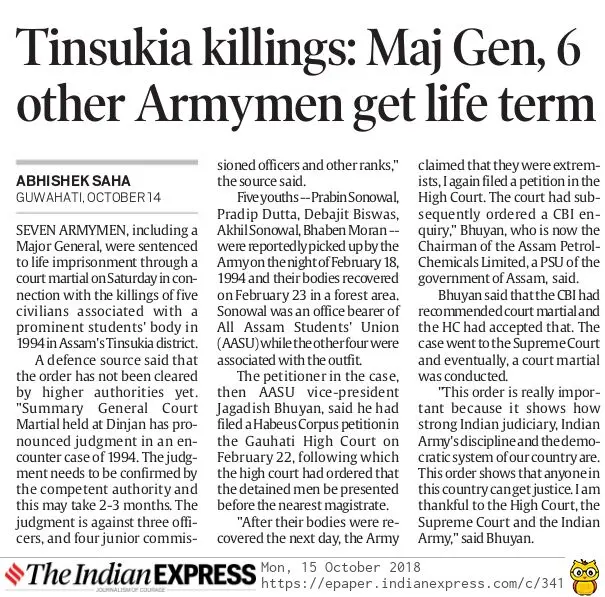
A group of soldiers at a signal station of the Dehra Dun Brigade Photos courtesy: The British Library
London, November 1
The UK government has unveiled plans to offer support to Indian soldiers who fought for Britain during the two World Wars but lost out on pensions and other benefits accrued to British armed forces personnel at the time.
UK International Development Secretary Penny Mordaunt said the government is keen to rectify the injustice faced by Indian and other Commonwealth war veterans, many of whose families are now living in harsh conditions in their countries of origin.
“These veterans were cast off, not taken care of and not given pensions and looked after. There are about 8,500 of these individuals and their widows around the world who are living on one meal a day and have no access to healthcare,” Mordaunt said, during her address at the Punjabi Society of the British Isles annual gala on Wednesday.
“I will announce a new programme that will take care of these servicemen and veterans and their widows for the rest of their lives. And, I think that is a great example of the values and the shared humanity among the members of the Commonwealth that the Punjabi Society exhibits,” she said.
The new programme will be a partnership between the Royal British Legion, the UK’s armed forces charity, and the Department for International Development’s UK Aid initiative.
It is set to be formally announced in the lead up to Remembrance Sunday, held on November 11 every year as a day to commemorate the contribution of British and Commonwealth military and civilian servicemen and women in the two World Wars and later conflicts.
It marks Armistice Day of November 11, 1918, when World War I finally came to an end.
A charity auction at the Punjabi Society event, which included lots such as a series of cricket paraphernalia signed by the Indian cricket team and captain Virat Kohli, helped raise over 20,000 pounds for another armed forces charity, Combat Stress.
The UK-based organisation offers support to armed forces’ men and women suffering from post-traumatic stress disorders and mental health conditions.
“The Punjabi Society is known for its efforts to support good causes over the years and we are very proud to help raise funds for the armed forces charity Combat Stress this year,” said Rami Ranger, British Indian businessman and patron of the society.
The event also marked the Pride of Punjab awards presentation, with Britain’s Pakistani-origin home secretary Sajid Javid being honoured for his political achievements on the basis of his roots in the wider region of Punjab in the Indian subcontinent.
“I am a proud Punjabi and this event celebrates the contribution British Punjabis make to every walk of British life,” Javid said.
Among the other winners included Indian-origin hotelier Jasminder Singh and Metropolitan Police Superintendent Davinder Singh Kandola for their services to the community.
“These awards reflect the real and significant contribution made by the Punjabi community to life in the UK,” said Atul Pathak, president of the Punjabi Society. — PTI















































































